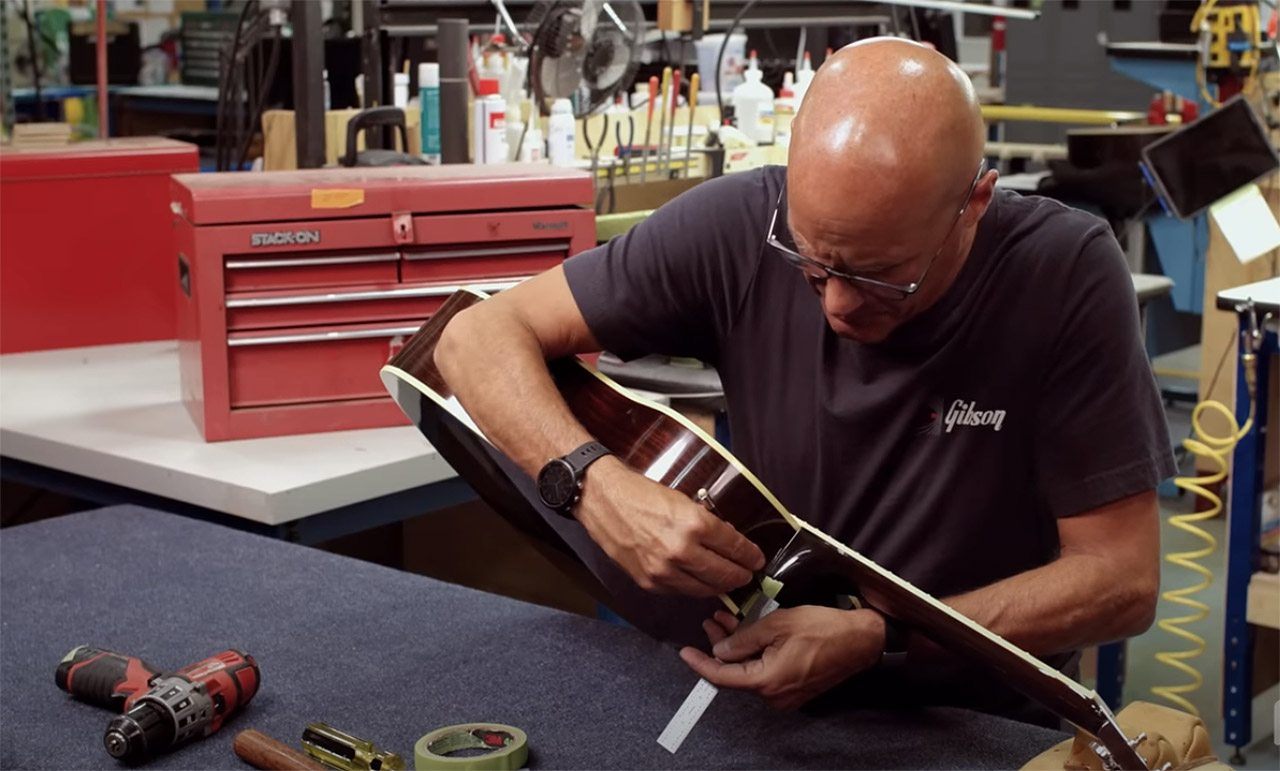Get your acoustic guitar stage-ready with this expert guide
Strap button placement on an acoustic guitar can be a polarizing topic. Is the best placement for a second button at the end of the heel or on the side? Don’t worry; Gibson’s Master Luthier Jim DeCola is here to walk you through the pros and cons of each option and show you how to install it in this episode of “Gibson’s Guide to Guitar Setup and Maintenance.”
For acoustic players, what are the pros and cons of a second strap button?
The ability to move around freely is essential for musicians performing live. A guitar strap keeps the guitar stable and securely attached to the player, meaning acoustic guitarists don’t have to remain seated and enabling more lively and engaging performances. It allows the musician to play comfortably, move around the stage, and connect better with the audience—you never know when you’ll need to bust out an energetic move like Pete Townshend’s famous windmill to energize a crowd.
However, the decision to install a second strap button on an acoustic guitar comes with both advantages and disadvantages. While it certainly improves the instrument’s practicality in live scenarios and is a more stable solution than simply tying one end of the strap to the headstock, modifying your guitar in this way is permanent and carries a risk of damaging the instrument.
Players should carefully consider their needs and preferences before proceeding and may want to seek advice from a professional. For those feeling apprehensive about making the modification themselves, consulting with a technician, such as those available through Gibson’s free Virtual Guitar Tech Service, is a recommended option.
Why shouldn’t I tie the strap to the headstock or use a specialized acoustic guitar stand?
A relatively noninvasive and traditional option is using string—or even a shoelace!— to tie one end of the strap to an acoustic guitar’s headstock, looping the cord under the strings, behind the nut. However, a strap attached in such a way balances differently and may create unwanted wear from the friction of the tied cord or loop. It can also affect tuning stability because any on-and-off pressure on the guitar’s body during play is now distributed across the neck (non-linearly bending it at times). Plus, that approach may also introduce new stresses on the neck joint—a valid consideration.
Another option for electric players who need acoustic sounds for intros or other parts of a tune is a specialized stand that’s designed to hold the acoustic instrument in place—the musician who is already wearing an electric guitar may walk up to the perched acoustic guitar, play it and then quickly step away, ready to resume playing the electric guitar as needed.
That’s less freeing than a strap, of course, and some players baulk at the idea from an aesthetic standpoint. In addition, the dedicated acoustic stand is yet another piece of equipment to load up and take to the gig. However, it may be the only logical choice if you’re already strapped onto another guitar or your acoustic instrument is an heirloom you want to keep in stock condition. Alternatively, you could use an electric guitar with a piezo pickup system for those acoustic tones, such as the Kirk Hammett 1989 Les Paul Custom, and leave that heirloom acoustic at home, mindful of seasonal humidity variations.
Shop Gibson’s range of premium straps here and check out the new Gibson Rosewood Standard acoustic guitars.

